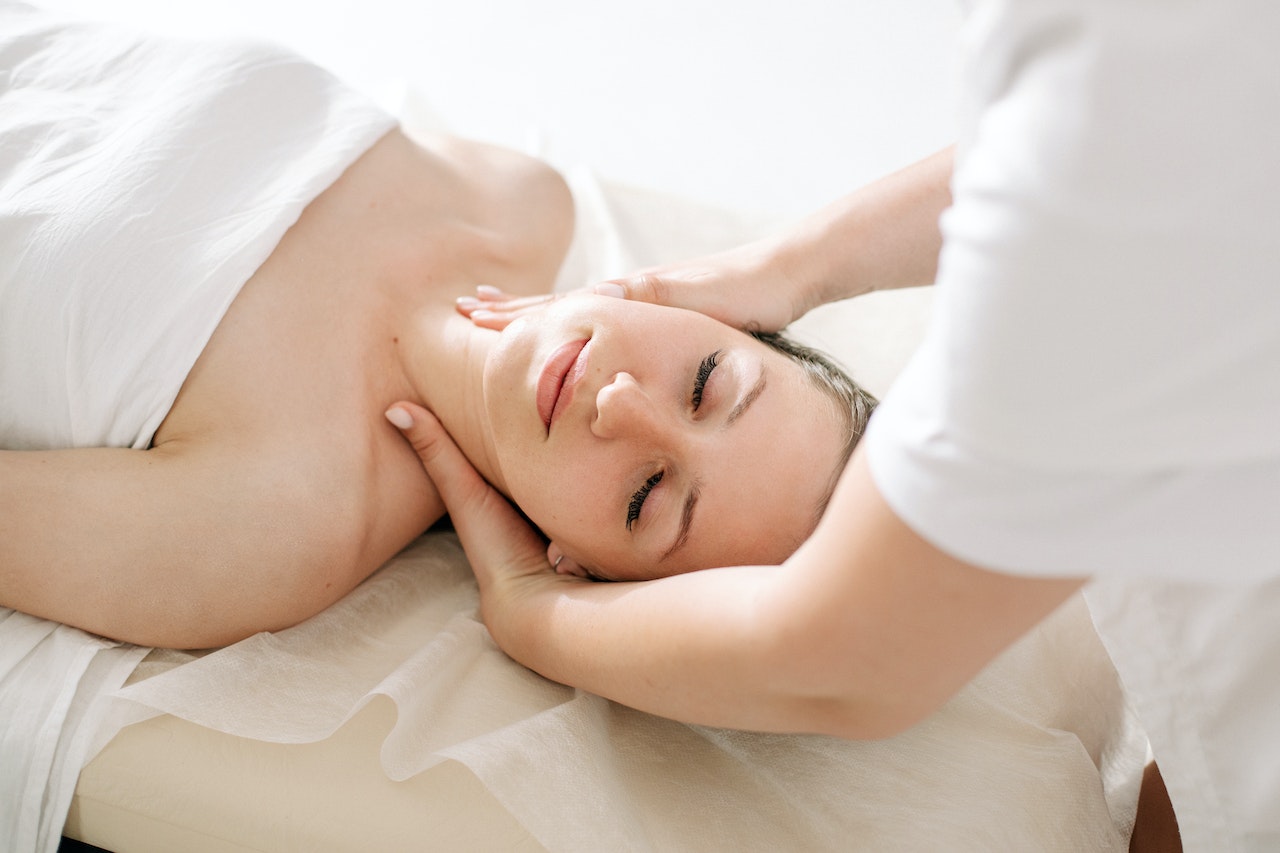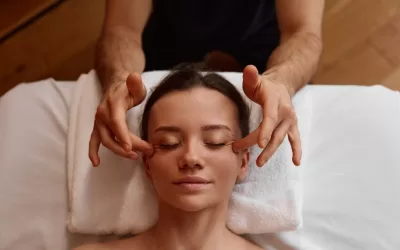Have you ever wondered how a simple touch can have such a profound effect on our bodies? Brace yourself, because we’re about to dive into the captivating world of massage therapy and uncover its scientific foundations. Get ready to unlock the secrets behind this ancient practice that has been soothing and rejuvenating people for centuries.
Massage is not just about relaxation; it’s a science-backed technique that can profoundly benefit your overall health and well-being. From reducing stress levels to releasing tension in specific muscle groups, massage has a remarkable impact on our physical and mental states. But how does it work? What are the mechanisms behind this seemingly magical healing art?
In this exploration, we’ll delve into the evidence-based approach that underpins the science of massage. Prepare to be astounded as we unravel the mysteries of how different techniques target specific parts of our bodies, promoting healing, pain relief, and improved circulation. So get comfortable as we embark on this enlightening journey through the fascinating science behind massage therapy.
The Evidence-Based Framework of Massage Therapy
Massage therapy is rooted in the science of manual therapy and complementary therapies. By understanding how research forms the foundation of modern massage therapy, we can explore the rigorous scientific studies that support its effectiveness.
Evidence-based practice enhances the credibility and reliability of massage therapy. Through systematic reviews and clinical trials, researchers have gathered substantial evidence to validate its therapeutic benefits. These studies have been published in reputable journals such as the Cochrane Database of Systematic Reviews.
One area where massage therapy has shown significant positive effects is on soft tissues. Clinical practice guidelines recommend it as a safe and effective treatment for various musculoskeletal conditions. In fact, a Cochrane review found that massage therapy had a beneficial impact on pain reduction and improved function in patients with chronic low back pain.
Moreover, massage therapy has been found to influence neurological sciences by promoting relaxation and reducing stress levels. It can also positively impact the immune system by boosting lymphatic circulation and enhancing immune response.
The evidence supporting massage therapy’s effectiveness extends beyond anecdotal experiences or personal testimonials. With a solid scientific foundation, it has gained recognition as a valuable therapeutic modality within healthcare settings.
Understanding the Mechanisms Behind Massage Therapy
Massage therapy is not just a relaxing experience; it also has profound effects on our bodies at a physiological level. By delving into the science of massage, we can uncover the intricate mechanisms that underlie its healing and relaxation properties.
Physiological Processes Triggered by Therapeutic Touch
- Massage exerts a mechanical force on our muscles, tendons, and soft tissues. This physical manipulation stimulates various physiological responses within our bodies.
- The pressure applied during a massage session promotes enhanced blood circulation. This increased blood flow delivers oxygen and nutrients to the tissues while removing metabolic waste products.
- Muscle tension is reduced through massage as it helps release tight knots and adhesions. This loosening of muscles allows for improved flexibility and range of motion.
How Massage Affects Circulation, Muscle Tension, and Nervous System Responses
- Massage therapy encourages vasodilation, which widens blood vessels and enhances blood flow throughout the body. This improved circulation supports tissue repair and aids in pain relief.
- As massage techniques target specific muscle groups, they help alleviate muscle tension by promoting relaxation and reducing spasms.
- The nervous system also responds positively to massage therapy. It triggers the release of endorphins – feel-good hormones that promote relaxation and reduce stress levels.
The Intricate Mechanisms Through Which Massage Promotes Healing and Relaxation
- At a cellular level, massage stimulates mechanoreceptors present in our skin, muscles, and connective tissues. These receptors transmit signals to our brain, activating a cascade of responses that contribute to healing.
- Hormones such as oxytocin are released during massage sessions. Oxytocin is known for its role in promoting feelings of bonding, trust, and overall well-being.
- The combination of physical touch, soothing environment, and skilled techniques employed during massages creates an environment conducive to deep relaxation.
Understanding the science behind massage therapy allows us to appreciate the physiological benefits it offers. By unraveling the mechanisms at play, we can better comprehend how massage promotes healing, relaxation, and overall well-being.
Health Benefits of Massage Therapy: Research Findings
Massage therapy has been the subject of numerous studies, shedding light on its wide range of health benefits. Research shows that regular massages can have a positive impact on various aspects of our well-being. Let’s delve into some compelling findings:
- Stress Reduction: Studies have consistently demonstrated that massage therapy is effective in reducing stress levels. By promoting relaxation and activating the body’s natural relaxation response, massages help to alleviate tension and induce a sense of calm.
- Anxiety and Depression Relief: Research indicates that massage therapy can also be beneficial for individuals struggling with anxiety and depression. Regular sessions have been shown to reduce symptoms, improve mood, and enhance overall emotional well-being.
- Improved Immune Function: One of the remarkable long-term benefits associated with massage therapy is its positive effect on immune function. Studies have found that regular massages can boost the activity of natural killer cells, which play a crucial role in defending against viruses and tumors.
- Enhanced Sleep Quality: If you struggle with sleep-related issues, massage therapy may offer some relief. Research suggests that regular massages can improve sleep quality by reducing insomnia symptoms and enhancing overall sleep duration.
- Reduced Blood Pressure: High blood pressure is a common health concern for many individuals. Fortunately, studies have shown that massage therapy can help lower both systolic and diastolic blood pressure readings. This reduction in blood pressure contributes to better cardiovascular health.
- Muscle Tissue Benefits: Massages not only provide relaxation but also offer tangible benefits to muscle tissue. Research indicates that they can increase blood flow to muscles, reduce muscle soreness after exercise, and promote faster recovery from injuries.
- Decreased Stress Hormones: Cortisol levels are often elevated in individuals experiencing chronic stress or anxiety. Massage therapy has been found to decrease cortisol levels significantly, helping to counteract the negative effects of prolonged stress on the body.
Managing Pain and Improving Quality of Life with Massage
Massage therapy has emerged as a powerful tool in managing pain and enhancing overall quality of life. Whether you’re dealing with chronic conditions like back pain or migraines, or simply looking to improve your physical well-being, therapeutic massages can offer remarkable benefits. Let’s explore how targeted massages can alleviate pain, enhance flexibility, and contribute to emotional well-being.
Relieving Chronic Pain Conditions
- Therapeutic massages specifically targeting chronic pain conditions have shown promising results.
- For individuals suffering from back pain, regular massage sessions can provide much-needed relief by reducing muscle tension and promoting relaxation.
- Migraine sufferers have also experienced significant improvements through massage therapy. By targeting trigger points and releasing tension in the neck and shoulders, therapists help alleviate both the frequency and intensity of headaches.
Enhancing Physical Performance
- Regular massages go beyond pain relief; they also play a crucial role in improving flexibility, posture, and overall physical performance.
- Deep tissue massage techniques effectively break down adhesions in muscles, allowing for increased range of motion.
- Swedish massage promotes relaxation while simultaneously stimulating blood circulation, which aids in faster recovery after physical activity.
Boosting Emotional Well-being
- Massage therapy not only addresses physical discomfort but also contributes to emotional well-being by increasing serotonin production.
- Serotonin is a neurotransmitter known for its mood-elevating properties. During massages, its levels rise significantly, leading to reduced stress levels and improved emotional balance.
- Integrative health approaches such as massage therapy have been proven effective in managing anxiety disorders and even conditions like fibromyalgia.
Addressing Specific Conditions with Massage Therapy
Fibromyalgia and Arthritis: Promising Symptom Management
Massage therapy has shown promising results in managing symptoms of specific conditions such as fibromyalgia and arthritis. For individuals suffering from fibromyalgia, targeted massage treatments can help alleviate pain and improve overall well-being. By targeting trigger points, massage therapists can release tension and reduce discomfort associated with this chronic condition. Similarly, individuals with arthritis can benefit from regular massages that focus on improving joint mobility and reducing inflammation.
Prenatal Massages: Relief for Pregnancy Discomforts
Pregnancy discomforts can be effectively addressed through prenatal massages. These specialized treatments not only provide relief from common pregnancy ailments but also promote maternal well-being. By targeting areas of tension and muscle soreness, prenatal massages can help pregnant women find relief from backaches, leg cramps, and swollen ankles. The relaxation induced by these massages contributes to stress reduction and improved sleep quality for expectant mothers.
Sports Massages: Enhancing Performance and Speeding Up Recovery
Sports massages are specifically designed to enhance athletic performance, prevent injuries, and expedite recovery. Athletes often rely on these targeted treatments to prepare their bodies before intense physical activity or competitions. By focusing on improving circulation and flexibility while addressing trigger points, sports massages help optimize muscle function and reduce the risk of injury during training or competition. Furthermore, these massages aid in post-workout recovery by promoting faster healing of muscle tissues.
Massage therapy offers a range of benefits for various conditions:
- Fibromyalgia: Targeted massage treatments release tension in trigger points.
- Arthritis: Regular massages improve joint mobility and reduce inflammation.
- Prenatal discomforts: Prenatal massages provide relief from backaches, leg cramps, and swollen ankles during pregnancy.
- Maternal well-being: The relaxation induced by prenatal massages reduces stress levels.
- Sports performance: Sports massages enhance circulation, flexibility, and muscle function.
- Injury prevention: Targeted treatments help reduce the risk of injuries during physical activities.
- Post-workout recovery: Massages expedite healing of muscle tissues after intense workouts.
The Science of Massage Explained
Massage therapy has been practiced for centuries, and its effectiveness is backed by scientific research. Understanding the science behind massage can help us appreciate its numerous benefits. Here are some key points to consider:
Manipulating Muscles and Tissues
- Massage involves the manipulation of muscles and soft tissues through various techniques.
- It helps improve blood circulation, which delivers oxygen and nutrients to the muscles.
- By targeting specific muscle groups, massage can relieve tension and reduce pain.
Neurological Effects
- Massage stimulates sensory receptors in the skin, transmitting signals to the brain.
- This stimulation triggers the release of endorphins, which are natural painkillers.
- It activates the parasympathetic nervous system, promoting relaxation and reducing stress.
Physical Benefits
- Regular massage sessions can enhance flexibility and range of motion.
- It aids in breaking down scar tissue and adhesions that may restrict movement.
- Massage also promotes lymphatic drainage, facilitating the removal of toxins from the body.
Psychological Well-being
- Beyond physical benefits, massage therapy has a positive impact on mental health.
- It reduces anxiety levels by lowering cortisol levels in the body.
- Massage can also improve sleep quality, helping individuals achieve better rest.
Complementary Therapies
Massage therapy often complements other treatments or therapies. Some examples include:
- Chiropractic care: Combining chiropractic adjustments with massage enhances overall musculoskeletal health.
- Physical therapy: Massage can be integrated into rehabilitation programs to expedite recovery from injuries or surgeries.
- Sports training: Athletes frequently incorporate massage as part of their training regimen to prevent injuries and aid in recovery.
Conclusion: Unveiling the Science Behind the Benefits of Massage
Massage therapy has been scientifically proven to offer many health benefits. It can help manage pain and improve quality of life. It can also address specific conditions like anxiety and stress. To make the most of massage therapy, look for licensed professionals who use evidence-based practices. Try different techniques and prioritize regular sessions for long-term benefits. Communicate with your therapist to customize your experience. Remember to consult healthcare professionals before making any significant changes to your wellness routine. Investing in regular massages can greatly improve your physical and mental well-being. Take charge of your health today and experience the transformative power of massage therapy.
Sources:
Unveiling the Magic: How the Science of Massage Rescues Athletes and Desk Pros from Pain Woes!
Are you tired of persistent pain and injuries holding you back? Look no further than Beyond Ergonomics, where the secrets of the science of massage are unlocked to address your body imbalances and bring about transformative change!
Say goodbye to the culprits behind your agony—repetitive use, sedentary habits, and muscle imbalances—as Beyond Ergonomics dives deep into the root causes of your discomfort. With their expert guidance, you’ll discover newfound freedom from pain that you never thought possible!
But wait, there’s more! Introducing MedicinEvolution Bodywork Beyond Massage—a cutting-edge solution that goes above and beyond traditional methods. If you’ve been desperately seeking relief from stubborn symptoms without success, MedicinEvolution is your beacon of hope.
Unleash the power of the science of massage as MedicinEvolution’s skilled practitioners work their magic on your weary body. Whether it’s chronic pain, lingering injuries, or bothersome discomfort, their transformative bodywork techniques are tailored to address the unique challenges plaguing you.
Don’t let pain dictate your life any longer—take charge and make your appointment with MedicinEvolution today! Embrace the science of massage and rediscover the joy of a pain-free existence. Your body will thank you for it!





